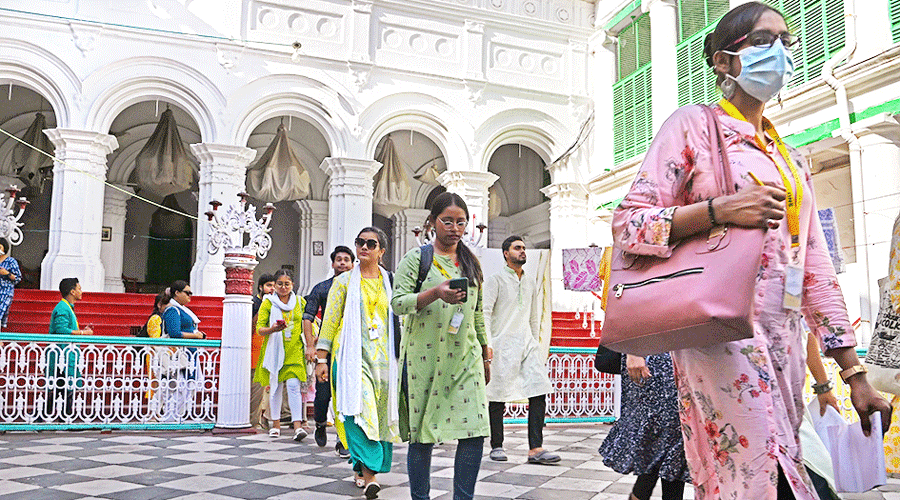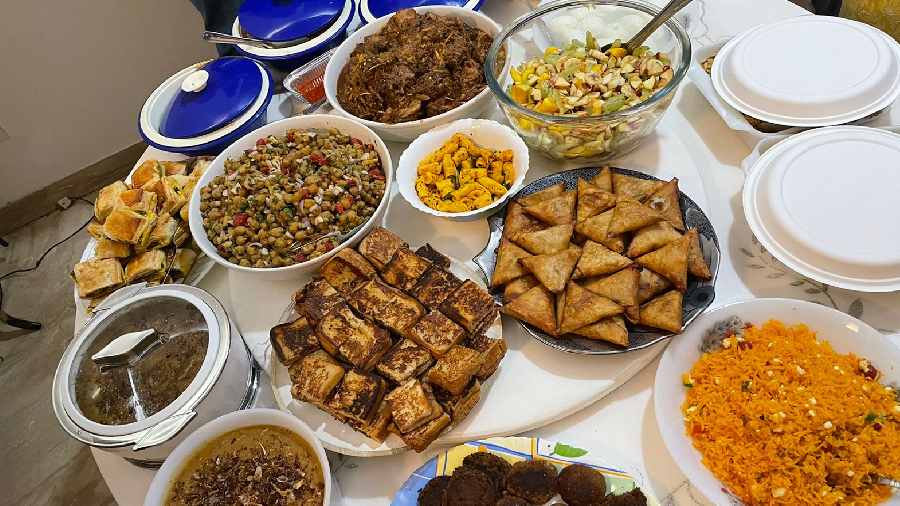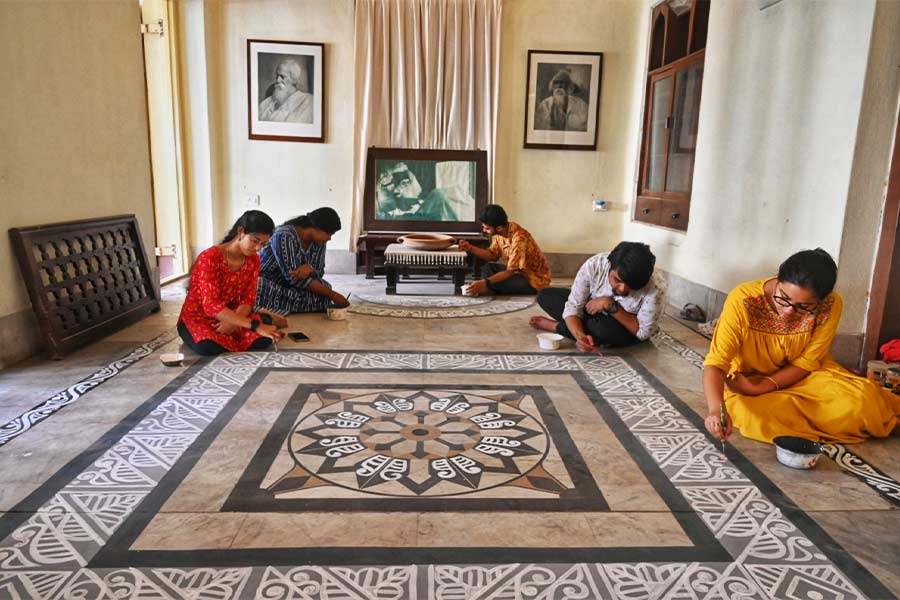A group of students toured Zakaria Street, Colootola Street and adjoining bylanes of central Kolkata on Thursday before sharing an iftar meal with residents of those areas.
In doing so, they were introduced to a slice of central Kolkata that now comes abuzz mainly as a food hub during the Ramazan month. They got a peek into a history of shared living pointing to the melting pot that Kolkata is.
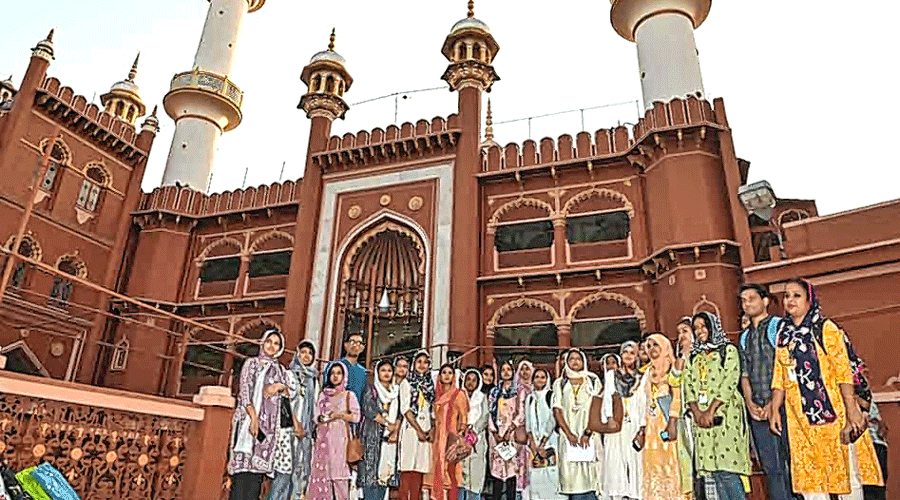
Students at Nakhoda Masjid on Thursday.
Sanat Kr SinhaA 160-year-old thakurdalan, which still hosts a family Durga Puja, is as much a part of that shared history as the majestic Nakhoda mosque.
The group, made of around 30 students and a few teachers from a university in New Town, started the walk around 3pm.
Their first stop was the house of Mutty Lall Seal, a 19th century educationist, social reformer and preacher of Brahmo Samaj.

The students on Zakaria Street, dotted with stalls selling iftar delicacies.
Sanat Kr SinhaRoy Bari, the sprawling homestead of the Badan Chandra Roy family in Colootola, belied the dinginess surrounding it. The arched thakurdalan is fronted by a quadrangle marked by pillars topped by decorative lamps.
The eldest among the present descendants, Pashupati Roy, 84, talked to the visitors at length. A wall clock bearing the name of Cooke & Kelvey, a Victorian-era silversmith in London, hung above his head.
“Back in the days, hundreds of residents of the area, most of them Muslims, would have prasad at our puja. Similarly, we would get goodies on Id. The tradition is still on but the grandeur has declined,” he said.
“Such is the history and rich heritage of our city and its dwellers. It is diverse with an enthralling convergence of cultures. We need to make more and more people aware of that,” Sabir Ahamed, the guide for Thursday’s tour and convener of the Know Your Neighbour campaign, told the participants.
The tour, titled Dosti ki Iftari, was jointly organised by Sister Nivedita University and Know Your Neighbour, a campaign that promotes communal harmony.
“We have a very cosmopolitan campus. Students from all religious and cultural backgrounds come to study together. But we want them to have an idea of pluralism beyond the classroom environment. It is especially necessary because of the times we live in,” said Sanchari Chakraborty, who teaches political science at the university.
On their way fell Md. Ali Library. “Established in 1930, it is said to be the best repository of Urdu books after the National Library. It is the only library where Urdu editions of Mahabharata and Ramayana are available. It is named after Maulana Md. Ali Jauhar, a freedom fighter and journalist,” Ahamed told the students.
As the group made their way along the crowded Zakaria Street, the evening air was overridden by the aroma of kebabs, haleem and other iftar delicacies.
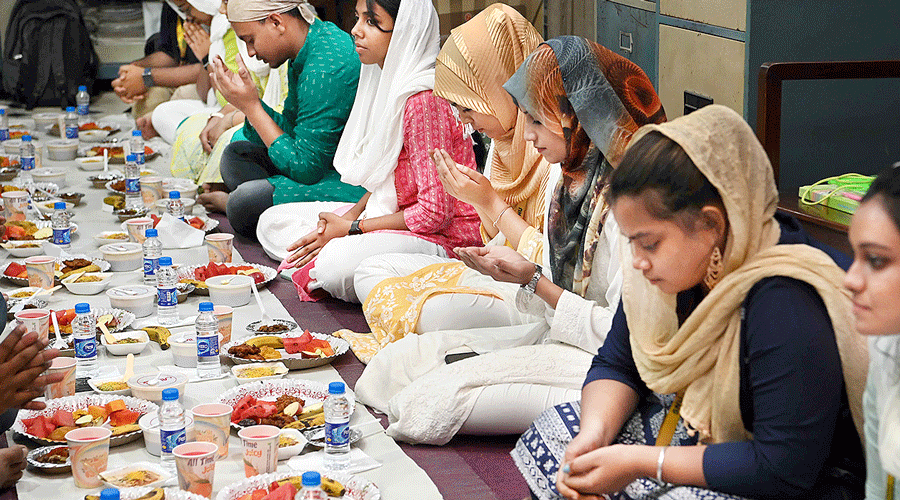
The students and residents of the area at an iftar at the Oosman family’s home near Nakhoda Masjid.
Sanat Kr Sinha“I came to Zakaria Street last year during Ramazan. But that was only for food. But there is so much more to this area. I live in Salt Lake. I have done my schooling there. Now, I go to New Town. Salt Lake and New Town are planned cities. Nothing like this place, which is steeped in history,” said Todi Dutt Mazumder, a student of sociology.
Nakhoda Masjid, at the intersection of Zakaria Street and Rabindra Sarani, was the penultimate stop for the group.
Built in the 1920s, the architecture of the mosque was inspired by the mausoleum of the Mughal emperor, Akbar, at Sikandra near Agra.
“It was built by the Kutchi Memon Jamaat, a community of businessmen from Kutch in Gujarat. Nakhoda means mariner and the mosque was named after Abdur Rahim Oosman, a leader of the community, who was into shipping and sugar and was one of the chief patrons of the mosque,” said Ahamed.
The students were taken around the mosque by Gulam Sharfuddin Oosman, a descendant of Abdur Rahim Oosman, and his son Taha.
After the tour, the visitors were taken to the Oosman home, a two-minute walk from the mosque. In a ground-floor room lay an elaborate iftar spread.
“Thank you for visiting our home. Kolkata is incomplete without this neighbourhood,” Oosman told the visitors.
“Thank you for having us here,” replied a teacher.


